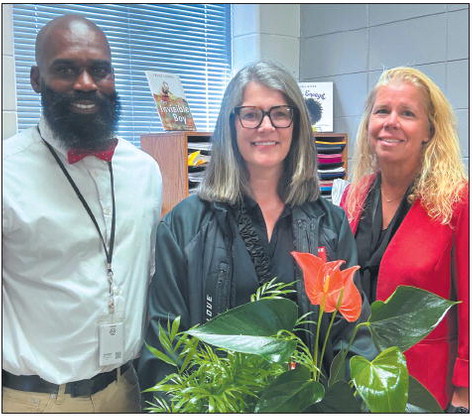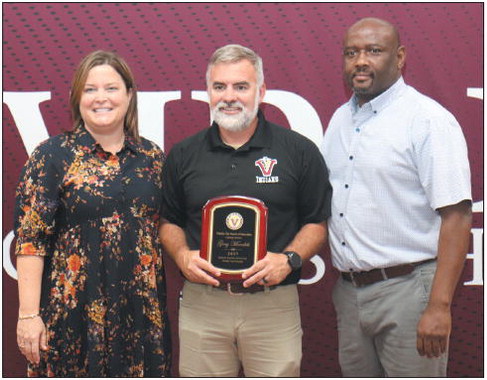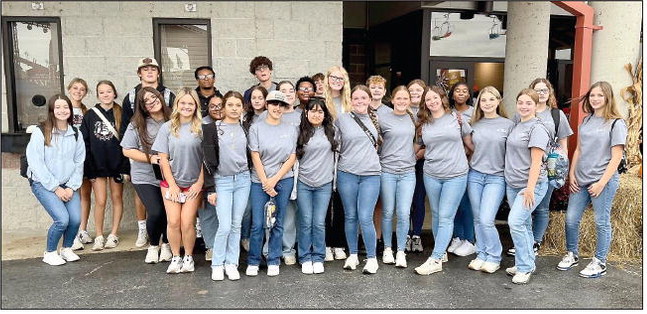editorials
Talking Turkey
Well, here we are again in the middle of November, thinking about Thanksgiving. Our family is trying to coordinate calendars and schedules so we can be together in one place at the same time. It’s a logistical nightmare, as usual.
Fearing that turkey and other traditional Thanksgiving Day staples may be limited this year due to supply chain issues, my husband bought a turkey breast last week and stuck it in our freezer.
“A turkey breast?” I asked. “Just the breast? What about the legs and wings? What about the giblets? How will I make giblet gravy if there are no giblets?”
He explained that he just wanted to go ahead and get “something,” just in case the stores sell out.
I love the traditional Thanksgiving meal. My mother makes the best turkey dressing of all time (https://www.youtube. com/watch?v=g1-NrBGbctI). I love a side of greens (especially mustard greens) made more delicious by the first frost of the season. And pumpkin pie? Yes, please! And plop a dollop of whipped cream on my slice before you serve it to me.
But the centerpiece of the meal, of course, is the turkey — golden brown, piping hot, crispy skin, and simply delicious. So let’s talk turkey.
TURKEY INSEMINATION
Did you know that artificial insemination is used almost exclusively to produce the more than 240 million turkeys raised on the 2,500 farms across the US each year? We can thank poultry experts like William Henry Burrows, Joseph P. Quinn, and Dr. Frank Ogasawara for that important advancement.
In the 1950s, the turkey farming industry was in trouble. Due to years of selective breeding to produce delicious turkeys with larger breasts and meatier bodies, domesticated turkeys were having difficulties mating naturally — they struggled to “do it” the old fashioned, birds-and-the-bees kind of way. Their numbers began dwindling, and turkey farmers began panicking.
Burrows and Quinn had published their research and methodology in 1939 in a circular called, Artificial Insemination of Chickens and Turkeys. Ogasawara expanded on their work then taught the technique to poultry experts around the world, and the Thanksgiving turkey was saved.
TOM TURKEY BODY PARTS
Do you know the names and terminology of the weird body parts on a tom turkey? The fleshy, dangling protuberance atop the turkey’s beak is called a snood. The feathers that stretch downward eight to ten inches long from the breast are called beards. The loose thing on the underside of the beak is known as a wattle, and incidentally, I’m developing a wattle of my own under my chin thanks to the aging process.
BUYING YOUR THANKSGIVING DAY TURKEY When you go to the grocery store to buy your turkey this year, what size turkey should continued from page
you purchase? According to the US Department of Agriculture (USDA), size your turkey according to the number of people you intend to feed — allow one pound of turkey per person. If you buy a fresh turkey, buy it one or two days before you plan to cook it and keep it refrigerated. If you purchase a frozen turkey, make sure you read the next section. THINGS TO REMEMBER, THINGS TO KNOW Raise your hand if you’ve ever forgotten to thaw your frozen turkey in advance of Thanksgiving Day. I have. If you buy a frozen turkey, you can thaw it safely in your refrigerator allowing approximately 24 hours for every 4 to 5 pounds. If you thaw it in cold water, allow approximately 30 minutes per pound. If your turkey has a giblet package tucked in its cavity, don’t forget to take it out before placing your turkey in the oven. USDA notes that if you use an oven-proof food thermometer, place it in the turkey at the start of the cooking cycle. It will allow you to check the internal temperature of the turkey while it is cooking. If you are cooking just a turkey breast, stick the thermometer in the thickest part. For whole turkeys, stick it in the thickest part of the inner thigh. Once the thigh has reached 165°F, check the wing and the thickest part of the breast to ensure the turkey has reached a safe minimum internal temperature of 165°F throughout.
After you remove your turkey from the oven, let it stand for 20 minutes before carving to allow juices to set. Supposedly, the turkey will carve more easily if you follow this rule. Though the turkey is front and center on the Thanksgiving Day supper table, the real point of it all is to gather with cherished loved ones and be grateful for the many blessings each of us has. So this year, before you bite into that turkey leg, take a few moments to reflect, be thankful, and love one another. That’s what it’s all about.





